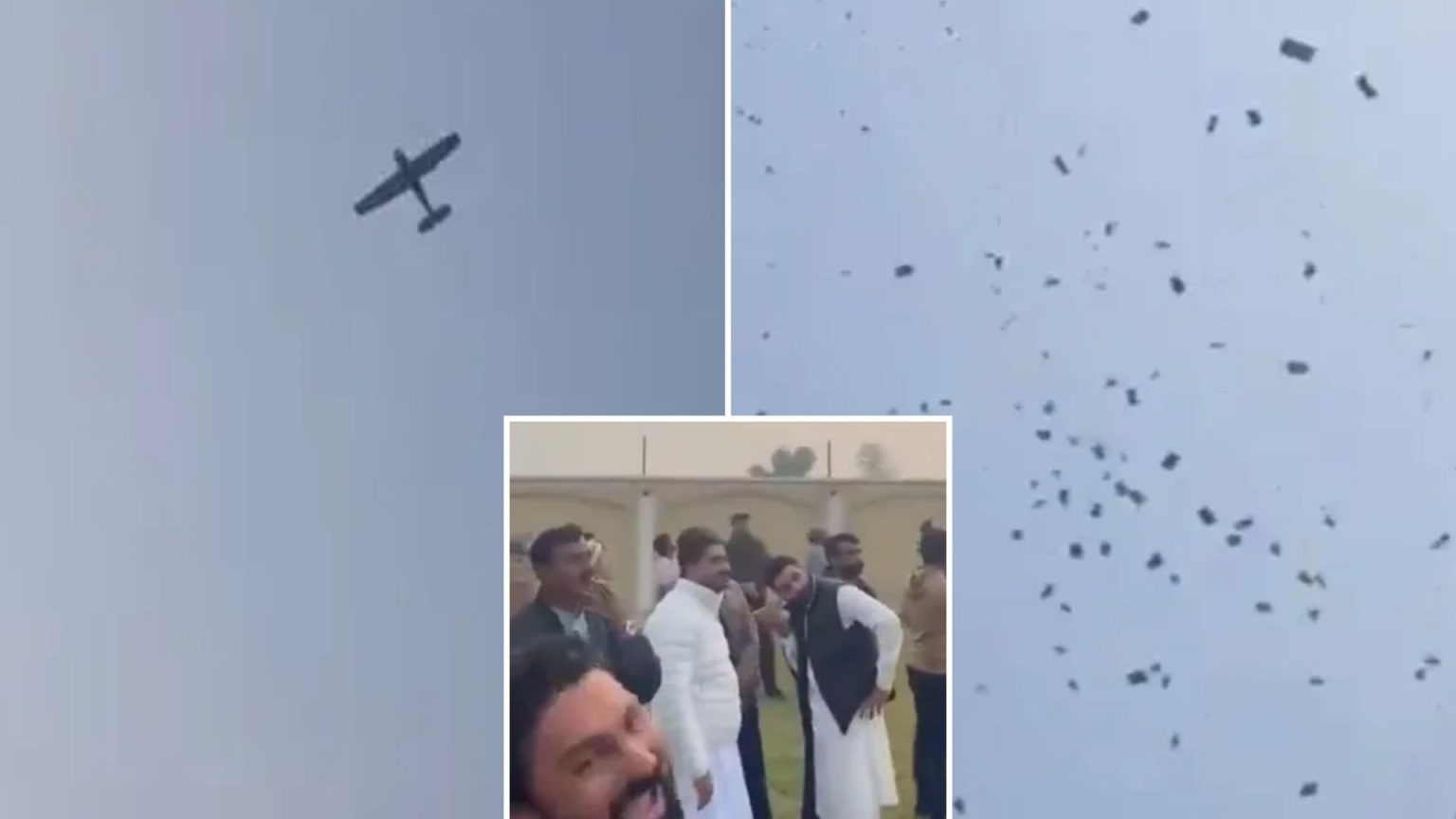A viral video showcased a breathtaking, albeit controversial, display of opulence at a wedding in Hyderabad, Pakistan. The groom’s father, overflowing with joy for his son’s nuptials, hired a light aircraft to shower the wedding guests with millions of rupees, equivalent to tens of thousands of pounds. The cash rained down from the sky onto the bride’s house where the reception was being held, creating a surreal spectacle as guests gazed upwards in astonishment, scrambling to collect the fluttering banknotes. The sheer volume of money falling from the plane created a mesmerizing visual, transforming the courtyard into a scene of unexpected bounty.
While intended as a grand gesture of celebration, the act sparked a mixed reaction online. Many criticized the extravagant display as wasteful and insensitive, considering the widespread poverty in Pakistan. Commenters argued that the substantial sum could have been used to support those in need rather than being dramatically scattered from the sky. The contrast between the opulent display and the economic realities of many in the country fueled the criticism, with some suggesting the money could have made a tangible difference in the lives of the less fortunate. The act highlighted the stark disparities in wealth and prompted a discussion about responsible spending and social consciousness.
However, not all responses were negative. Some found the spectacle amusing and even enviable, particularly imagining the delight of the bride’s neighbors who also benefited from the windfall. The incident sparked lighthearted banter online, with some joking about the groom’s potential lifelong burden of repaying his father’s extravagant gesture. The humorous perspective provided a counterpoint to the more serious criticisms, illustrating the diverse ways in which people interpreted the event.
This extravagant display of wealth is not an isolated incident but reflects a growing trend of elaborate and sometimes unusual wedding celebrations in South Asia. Recent examples include a wedding car in India adorned entirely with vegetables, a couple arriving at their ceremony on bullock carts, and even a bride making her grand entrance encased within a giant transparent balloon flanked by dancers dressed as Hindu deities. These unconventional celebrations highlight the evolving customs and the desire to create memorable and unique experiences, often drawing inspiration from local traditions and cultural nuances.
The incident of the money shower underscores the complex interplay of tradition, celebration, and social responsibility. While the groom’s father’s intentions were likely rooted in expressing joy and showering blessings upon the newlyweds, the method chosen sparked a debate about the appropriate use of resources in a society grappling with economic challenges. The incident serves as a reminder of the potential for even well-intentioned acts to generate unintended consequences and ignite discussions about societal values.
In conclusion, the viral video of the money shower at the Pakistani wedding captured a fleeting moment of extravagance that resonated far beyond the confines of the celebration. It became a talking point on social media, sparking conversations about wealth disparity, social responsibility, and the evolving nature of wedding traditions. While some celebrated the grand gesture, others criticized its perceived wastefulness. Ultimately, the incident serves as a microcosm of the larger societal conversations surrounding wealth, its display, and its potential impact on communities. The event, though brief, left a lasting impression on the digital landscape and ignited discussions about the meaning of celebration and the responsibilities that come with affluence.











